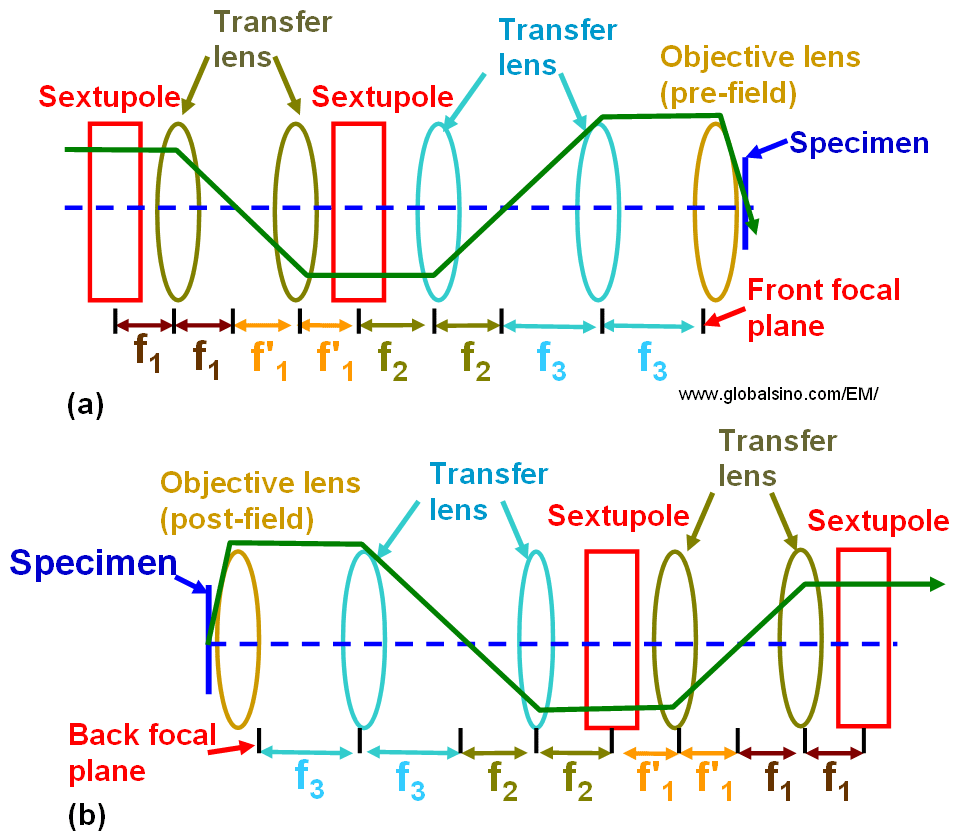=================================================================================
In many EM systems, a strong objective pre-field lens or a 'mini' lens is used to assist to form a fine probe. The schematic illustrations in Figure 3786a show the convergent illumination configurations of various modes in TEMs. In the CTEM condition in Figure 3786a (a), the condenser mini-lens (CM lens) is strongly excited, and incident electrons are focused on the pre-focal point of the objective pre-field, resulting in a parallel illumination on a wide area on the specimen and providing highly coherent electron illumination. In the EDS condition in Figure 3786a (b), the CM lens is turned off and the incident electrons are focused on the specimen by the objective pre-field, resulting in a small-probe illumination. In this case, the illumination angle (α1) is large so that high beam intensity is obtained for a small area in the analytical EDS method. In the NBD mode in Figure 3786a (c), a smaller condenser aperture is used to form a smaller illumination angle (α2). Therefore, a small-diameter probe with relatively high coherence in the illumination is achieved. In the illumination condition in Figure 3786a (c), the illumination angle (α) with a constant probe size can be changed by changing the excitations of the condenser lenses and the CM lens to obtain the incident illumination to form ideal convergent beam electron diffraction (CBED) patterns.
Figure 3786a. Convergent illumination configurations: (a) CTEM mode, (b) EDS mode and (c) NBD mode.
Figure 3786b shows the full view of of the practical double-sextupole Cs correctors for STEM and for TEM, respectively. The positions of the correctors with respect to the pre- and post-fields of objective lenses for STEM and TEM, respectively, are also indicated.

Figure 3786b. Double-sextupole spherical aberration correctors for: (a) STEM and (b) TEM.
Due to the significant energy spread in the electron beam, the chromatic aberration associated with the lenses will lead to image degradation in TEM as listed in Table 3786.
Table 3786. Causes of energy spreads and the image degradation induced by the associated lenses.
|
